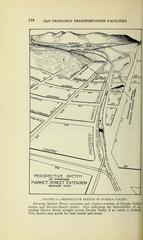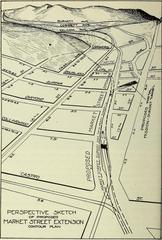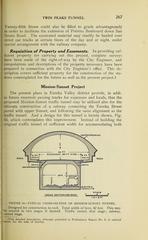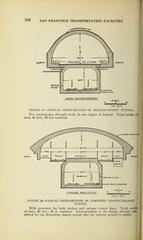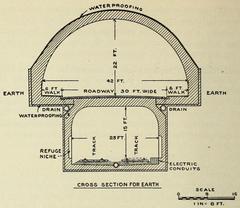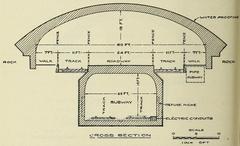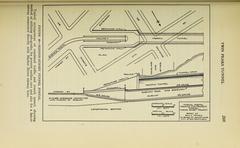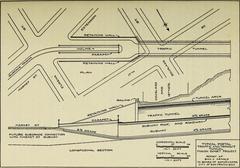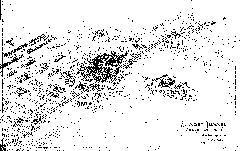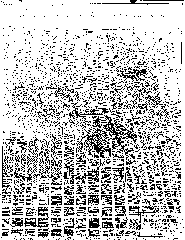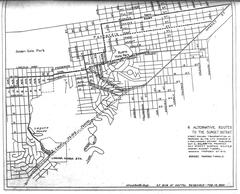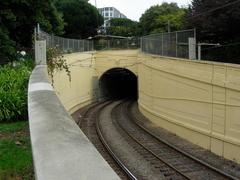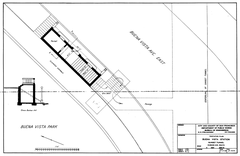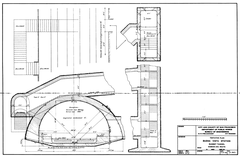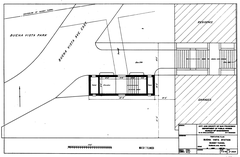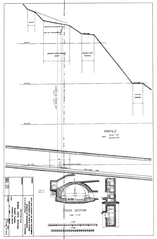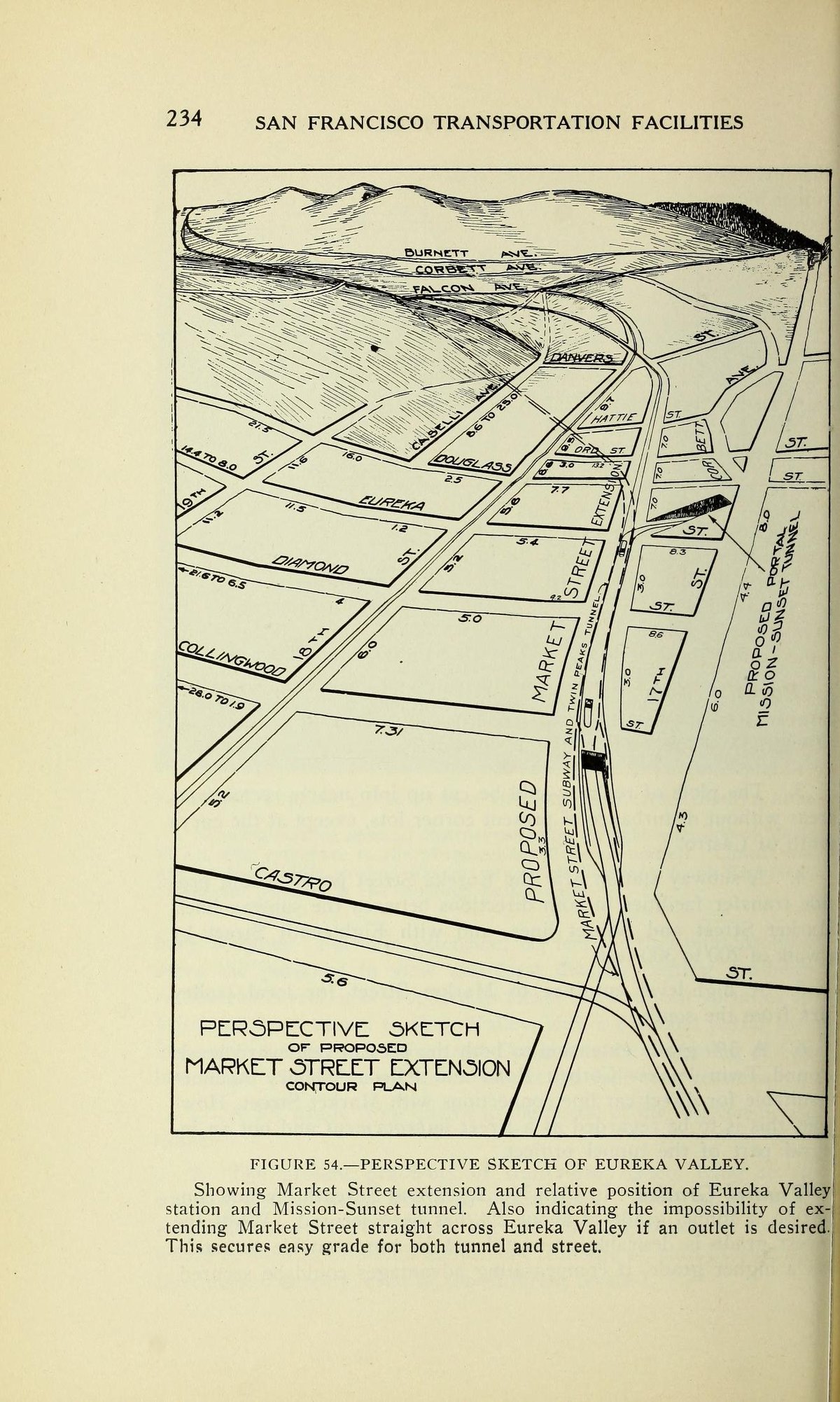
Sunset Tunnel San Francisco: History, Visiting Information, and Travel Tips
Date: 15/06/2025
Introduction
San Francisco’s Sunset Tunnel—also known as the Duboce Tunnel—is a remarkable feat of early 20th-century engineering that continues to play a pivotal role in the city’s transit network. Completed in 1928, this 4,232-foot tunnel connects the Duboce Triangle and Cole Valley neighborhoods beneath Buena Vista Park, serving as the exclusive route for the N Judah Muni Metro line. While not open to pedestrian access and lacking traditional visiting hours or tickets, the Sunset Tunnel offers a unique experience for transit enthusiasts, history buffs, and urban explorers through its portals and the vibrant communities it connects.
This comprehensive guide explores the tunnel’s history, cultural and engineering significance, practical visitor information, and the best ways to enjoy the surrounding neighborhoods. Whether you’re a local or a traveler, understanding the Sunset Tunnel’s story enriches your appreciation for San Francisco’s innovative spirit.
For more details, see Wikipedia, the SFMTA Sunset Tunnel Project, and SFTourismTips.
Table of Contents
- Historical Background
- Engineering and Urban Significance
- Visiting the Sunset Tunnel: Access and Tips
- Nearby Attractions and Neighborhood Highlights
- Travel Tips, Accessibility, and Safety
- Frequently Asked Questions (FAQ)
- Conclusion
- References
Historical Background
Vision and Early Development
The Sunset Tunnel arose from San Francisco’s need to connect its rapidly expanding western neighborhoods in the early 1900s. Previously, the Sunset District was a patchwork of sand dunes and scattered settlements, isolated by the city’s hilly terrain. In 1913, transit engineer Bion J. Arnold proposed a tunnel to link the Panhandle with the western neighborhoods. While that particular plan was shelved in favor of the Twin Peaks Tunnel, the demand for efficient, direct transit to the Sunset District persisted (FoundSF).
Planning and Construction
By the early 1920s, slow and winding surface streetcar routes were hindering Sunset District growth. The San Francisco Board of Supervisors approved funding for a new tunnel in 1921, and City Engineer Michael M. O’Shaughnessy recommended the Duboce alignment—running under Buena Vista Park from Duboce Triangle to Cole Valley (Wikipedia). Construction began in the mid-1920s, following the success of the Twin Peaks Tunnel, and was completed efficiently thanks to city leadership and community support. Property owners along the route helped fund the project, reflecting San Francisco’s strategy of using transit infrastructure to spur residential development (Streetcar.org).
Opening and Impact
The tunnel opened for service on October 21, 1928. The N Judah line, its principal user, quickly became one of the city’s most popular streetcar routes, contributing to a building boom and the transformation of the Sunset District from sand dunes to a thriving community (Wikipedia). The project not only solidified the Municipal Railway’s dominance over private operators but also set a precedent for public transit-driven urban growth.
Modernization and Preservation
Despite the nationwide decline of streetcars in the mid-20th century, the Sunset Tunnel survived due to its design limitations for buses and the enduring success of the N Judah line. In the 1980s, it was integrated into the Muni Metro system with modern light rail vehicles. Recent renovations—including the Sunset Tunnel Trackway Improvement Project (2014–2017)—ensured the tunnel’s continued safety, reliability, and seismic resilience (SFMTA Sunset Tunnel Project).
Engineering and Urban Significance
The Sunset Tunnel’s construction was a landmark in urban transit engineering. Boring a 4,232-foot tunnel through San Francisco’s challenging geology required innovative techniques and robust planning. The double-track configuration accommodates heavy, two-way traffic, supporting the N Judah line’s status as the busiest Muni Metro route, with over 40,000 daily riders (SFMTA Project Overview).
This tunnel helped shape the neighborhoods it serves. By offering a direct, grade-separated route, it enabled significant residential development and established the Sunset District as a desirable, accessible community. The tunnel remains a vital artery for commuters, students, and tourists, supporting the city’s sustainable mobility goals.
Visiting the Sunset Tunnel: Access and Tips
Location and How to Experience the Tunnel
The Sunset Tunnel connects the Duboce Triangle and Cole Valley neighborhoods. The eastern portal is at Duboce Avenue and Noe Street (near Duboce Park); the western portal is at Carl and Cole Streets in Cole Valley (SFTourismTips). The tunnel is not open to pedestrians but can be experienced by riding the N Judah Muni Metro line, which operates daily from approximately 5 AM to 12:30 AM (SFMTA N Judah Route).
Tickets and Fares
There is no special ticket for the tunnel; a standard Muni fare is required to ride the N Judah line. As of June 2025, a single adult fare is $3.00, payable via Clipper Card, MuniMobile app, or cash at ticket machines (SFMTA Fare Information). For frequent riders or visitors, consider a Visitor Passport or Clipper Card for convenience and savings.
Accessibility
The N Judah line and its stations near the tunnel are fully accessible. Trains and platforms accommodate wheelchairs, and both Duboce Park and Carl & Cole stops are designed with accessibility features (SFMTA Accessibility).
Best Times to Visit
- Best Light for Photos: Early morning or late afternoon.
- Least Crowded: Midday and weekends.
- Weather: San Francisco can be cool and foggy, especially in summer. Dress in layers and bring a jacket (Sarowly).
Nearby Attractions and Neighborhood Highlights
Duboce Triangle and Duboce Park (Eastern Portal)
Duboce Park is a lively green space surrounded by Victorian homes, popular with locals and dog walkers. It offers excellent views for transit photography and a welcoming atmosphere for a picnic or rest.
Cole Valley and Inner Sunset (Western Portal)
Cole Valley boasts cozy cafes (like Zazie and the Ice Cream Bar), boutique shops, and a relaxed, residential feel. The Inner Sunset is just a few blocks away, offering diverse dining and easy access to Golden Gate Park (SFTourismTips).
Combining with Other Attractions
- Golden Gate Park: Museums, gardens, and recreation just west of the tunnel.
- Haight-Ashbury: Historic district east of Cole Valley, famous for its counterculture legacy.
- Castro District and Lower Haight: Easily reached via public transit for more dining and nightlife options.
Travel Tips, Accessibility, and Safety
- Use Public Transit: Parking is limited; the N Judah is the most convenient way to access the tunnel.
- Stay Safe: The surrounding neighborhoods are generally safe, but standard urban precautions apply (Travel Itinerary Daily).
- Accessibility: Sidewalks are well maintained, but some nearby streets are steep. The area around Duboce Park is flat and highly accessible.
- Local Etiquette: Respect residential neighborhoods, keep noise low, and dispose of litter properly.
- Weather Preparedness: Fog and cool temperatures are common. Always check the forecast and bring appropriate layers (Make Time to See the World).
- Photography: The tunnel portals are great for photos—stay on public sidewalks and never trespass on tracks or restricted areas.
Frequently Asked Questions (FAQ)
Can I walk or tour inside the Sunset Tunnel?
No, the tunnel is active rail infrastructure and not open to pedestrians or tours.
How do I experience the tunnel?
Ride the N Judah line, which passes through the tunnel between Duboce Park and Cole Valley.
Do I need a special ticket?
No, a standard Muni fare applies for riding the N Judah.
Is the area accessible?
Yes, both portals and Muni trains are accessible for wheelchairs and those with mobility challenges.
When is the best time to visit?
For the best photography and fewer crowds, visit early morning, late afternoon, or midday on weekends.
What else is nearby?
Duboce Park, Cole Valley, Inner Sunset, Golden Gate Park, Haight-Ashbury, and the Castro District are all within easy reach.
Conclusion
The Sunset Tunnel is a living testament to San Francisco’s dedication to transit innovation and community connectivity. While not a conventional tourist attraction, it offers a fascinating journey through the city’s engineering history and urban culture. By riding the N Judah, exploring Duboce Park or Cole Valley, and enjoying local cafes and parks, visitors gain a unique perspective on San Francisco’s layered cityscape.
To plan your visit, check schedules and fare information on the SFMTA website, and consider downloading the Audiala app for more guides, travel tips, and insider insights into San Francisco’s neighborhoods and transit history.
References
- Wikipedia
- SFMTA Sunset Tunnel Project
- SFTourismTips
- Travel Itinerary Daily
- Bon Traveler
- SFMTA Fare Information
- Sarowly
- Make Time to See the World
- Funcheap SF
- SFMTA Accessibility
- Streetcar.org
For additional travel resources, official updates, and historical information, visit the above links.
